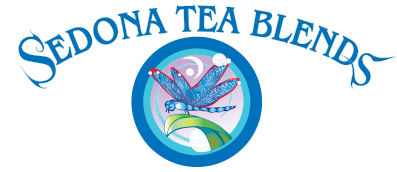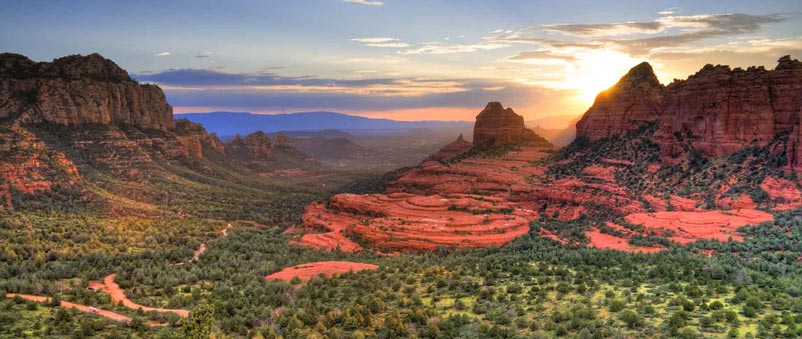What is an herbalist?
The American Herbalists Guild defines herbalists as people who dedicate their life to working with medicinal plants. They might include native healers, scientists, naturopaths, holistic medical doctors, researchers, writers, herbal pharmacists, medicine makers, wild crafters, harvesters, and herbal farmers to name a few. While herbalists are quite varied, the common love and respect for life, especially the relationship between plants and humans, unites them. Persons specializing in the therapeutic use of plants may be medical herbalists, traditional herbalists, acupuncturists, midwives, naturopathic physicians, or even one’s own grandmother. An herbalist has a bit of a wild streak running through their veins and is only satiated when they are sitting next to a plant with a sense of marvel at the perfection of nature.
An herbalist is a person who knows that wellness is more than an absence of disease; it’s a vitality of the spirit and the whole body is taken into consideration when healing is desired. The primary focus of the herbalist is to treat people as individuals irrespective of the disease or condition they have and to stimulate their innate healing power through herbs. On the other hand, the primary focus of conventional physicians is to attack diseases using strong chemicals that are difficult for the body to process, or through the removal of organs. Not only does this ignore the unique make up of each individual, but also many patients under conventional care suffer from side effect that may be as bad as the condition being treated. The philosophical difference between herbalists and conventional physicians has profound significance: an herbalist chooses earth values over the dominant paradigms of medicine, an herbalist recognizes that fixing a leaky roof when it’s raining is not the same thing as healing a home.
A good herbalist has developed a sense of balance between practical knowledge and intuition. A trained herbalist has gone through extensive practical studies of herbal therapeutics, understanding the effects of plants on human cells, tissues, and organ systems as well as the subtle complexities of the whole constitutional make up. An herbalist must study plant identification and basic botany, for knowing how to properly identify the correct, unpolluted healthy herb is paramount. A well rounded herbalist will know their local bioregional plants in the wild, which ones are edible, which are medicines and which may provoke undesirable effects. Anatomy, physiology, pathology and holistic nutrition are all part of herbal training. Tools might include client skills and learning from case studies, what works on individual body types and constitutions using time honored vitalistic strategies. Furthermore, an herbalist must learn organic gardening techniques and how to ethically harvest wild plants when it is appropriate and how to make medicines. This knowledge would be crucial if economic and transport systems break down and European, Chinese or even American herbs would be harder to obtain.
Yet, in addition to the scientific background, an herbalist must also engage in intuitive practices. For example, they practice plant journey work and intuitive training. Spending meditative (theta brain wave) earth time with the trees and plants in their native places and learning directly from them will give one insights not found in any herb book. These studies re empower one with ancestral abilities to gain access to generations of wisdom directly from nature. This helps the herbalist know what plant therapies to use in a given situation, line up characteristics of plants with personalities of people and find synergy in herbal formulations.
Today’s herbalists have a whole new paradigm to work within. We now have considerations with clients using multiple pharmaceuticals, supplements and herbs together. This translates to about 20% of the U.S. population. However, many herbs can be taken side by side with drugs with care and supervision.
How does herbal medicine work?
Herbal medicine works because the body is self-healing and knows what to do with plant remedies. While we are sleeping, our bodies repair themselves from a day’s worth of stressful onslaught. Only when stresses become overwhelming, does the body not have enough time to repair itself. Plant therapies can realign the body and aid in repair work. For example, one group of plants called nervines displays a remarkable ability to act as original keys that unlock the floodgates to healing. Our bodies use what they need of the plant and naturally discard the rest.
Herbal medicine works because, on closer inspection, plants and people are quite similar. For instance, if one expresses the green juice from a plant like stinging nettles and puts it next to human blood under a microscope or use an advanced technique called chromatography, they would find striking similarities. In fact, everything will be the same except one molecular difference. That difference is what makes blood red and plant juice green, iron and magnesium respectively. Primarily everything else is the same. However, the body knows how to make red blood cells from plant chlorophyll. This is why humans can thrive on a plant based diet.
Herbal medicine has, therefore, persisted as the world’s primary form of medicine since the beginning of time, with a history more than 5000 years old. While the use of herbs in North America has been overshadowed by a dependence on modern medications the last 100 year, 75% of the world’s population still relies primarily upon traditional healing practices, most of which are herbal medicine.
How safe are herbal remedies?
According to Ethnobotanist Dr. James Duke, Agricultural Research Services USDA, herbs are about 3,000 times safer than prescription drugs. Most pharmaceutical drugs are single chemical entities that are highly refined and purified and are often synthesized. In contrast, herbal medicines are prepared from living or dried plants and contain hundreds to thousands interrelated compounds. Science is beginning to demonstrate that the safety and effectiveness of herbs is often related to the synergy of its many constituents. For a comparison, herbal deaths are about 1 in 1,000,000 while NSAIDS (non-steroidal anti-inflammatory drugs, like ibuprofen) are about 1 in 10,000. Improper use of medication is 1 in 2,000 and western medicines all together are 1 in 333.
Herbs have been used traditionally not only for acute and chronic diseases but as preventative medicine for strengthening and supporting the basic constitution. In 1987 about 85% of modern drugs were originally derived from plants. Currently, only about 15% of drugs are derived from plants. Science is beginning to demonstrate that the safety and effectiveness of herbs is often related to the synergy of its many constituents (1).
The path of one herbalist
As I was finishing up at the Boulder School of Massage Therapy in Colorado in the late 70’s, I absolutely knew massage was not my vocation in life. I took an elective while in school, Herbology 101, and was so inspired and felt a bit shaken awake, I started studying right then and there. Seeing an ad in a local paper for an herb program with Michael Moore in Santa Fe, I sent in my deposit sight unseen. That was good enough for me. I remember clearly to this day arriving in Santa Fe and walking into the school with small child and backpack in tow. I saw a big man with a long beard looking rather like Santa Clause would if he were a biker, sitting at a table with a cowboy hat on with a sheriff’s star on it. There was an Egg McMuffin, a bottle of caffeine related supplements and he was rolling a cigarette when he looked up at me. I asked him to direct me to Michael Moore and he said he was Michael Moore.
After a bit of an initial shock wore off, I realized how incredibly fortunate I was to study with this person. Your mind loves to make judgements that just get in the way. Not only did he know herbs, but he could take the knowledge one step farther than any books and explain herbal pathways in the human body. I have over the years learned he is a remarkable herbalist and musician, having written symphonies for the Santa Fe Orchestra in his spare time. I spent over a year studying with him and traveled the southwestern US learning plant medicines.
I also had the opportunity to learn from a Mandan/Lakota pipe holder and medicine person. She taught me to see from a different view, a view that healing the body is second to healing the spirit. Because in thinking that this is all there is, we forget our interconnectedness to all of creation and that includes layers of dimensions one can access for intentional healing.
Where to study Herbal Medicine?
Finding a school or apprenticeship program can take some research but most is readily available via internet. The American Herbalists Guild has an educational directory (1).
Check your local health food store where ever you live and find a local herbalist and ask to study with them. Many herbalists take on apprentices or teach classes or lead herb walks. The planet really could use a few more plant people.
Quantum Herbalism
My mentors have instilled in me the awareness that thoughts are real things. Our belief systems create the world we live in and the world we all share right now that is part of a consensus agreement, is based on a death economy. Drugstores, pharmaceuticals, insurance companies, ambulance services and hospitals are all big business. Research has shown how a doctor’s diagnosis is received within the first fifteen minutes determines the outcome of that disease. The mind is a powerful thing that can either help us or harm us. What if we start living as though we are in perfect radiant health? What if we set our intention everyday to live as though we are already the person we always wanted to be; strong, wise and healthy. Along with other natural modalities, herbal medicine can lead one on this journey to a vibrant, natural life style.
www.americanherbalist.com
www.canyonspiritventures.com

